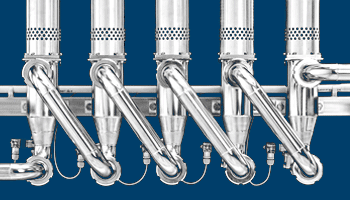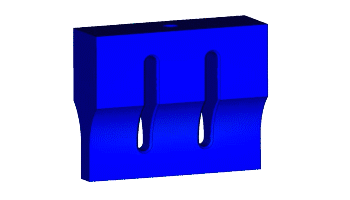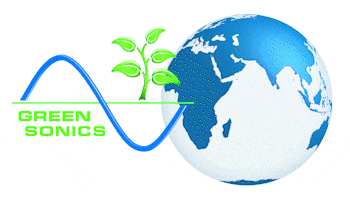SONOTRONIC GmbH
Becker-Goering-Str. 17-25
76307 Karlsbad, Germany
E-Mail: sales@sonotronic.de
Mon to Thu 8 am – 5 pm
Friday 8 am – 3 pm
Phone:
Ultrasonic treatment of biosolids
Increasing efficiency in the production of environmentally friendly energy
Biosolids such as sewage sludge or biomass from renewable raw materials (RRM) are significantly better converted during treatment with ultrasonic, resulting in an intensification of the digestion process without the addition of chemical substances.
What is ultrasonic disintegration?
Ultrasonic treatment of biosolids is a process whose fundamentals were researched at the Technical University of Hamburg-Harburg. After intensive research, SONOTRONIC has put the process into practice and developed an innovative technology for the disintegration of biomass and the sterilization of various media.
Part of the cells of the biomass are disintegrated by the ultrasonic and liquefied in the process. This liquefied material can then be better converted by microorganisms in the fermenters of a biogas plant, for example. This means that digestion runs more smoothly, resulting in up to 50% more biogas and correspondingly less residual substrate as a waste product. Other positive effects include savings in digestion volume and improved dewaterability of the biomass.
What are the advantages of ultrasonic technology?
An advantage of this technology is also the possibility of using ultrasonic to increase environmentally friendly energy generation and, in the case of wastewater treatment plants, to reduce the amount of waste materials to be disposed of. Ultrasonic treatment thus proves to be an extremely sensible application for municipal and industrial wastewater treatment and biogas plant operators, both economically and ecologically.
Principle of ultrasonic and cavitation
The effects of treating biosolids with ultrasonic occur because it causes periodic compression and expansion of the sonicated substance. At high sonic intensity, the medium of the substance ruptures during the phase of negative pressure. This leads to the formation of microscopic bubbles in the liquid, which fill with water vapor or gas.

In the subsequent pressure phase, the bubbles implode under extreme conditions on a microscale (cavitation). At a pressure of up to 500 bar and a temperature of up to 5,200 Kelvin, this produces enormous shear forces that tear open the walls of organic cells, bacteria, fungi, etc.
In the low frequency range (20 kHz to 100 kHz), large cavitation bubbles are generated, which cause extreme shear forces and effects during decay. In the medium frequency range (100 kHz to 1 MHz), smaller but even more effective cavitation bubbles are generated and radical sonochemical reactions are triggered in the water. When sonicated in the high frequency range above 1 MHz, the liquid begins to flow at the molecular level.
SONOTRONIC's technology works in the frequency range of 20 kHz, as this is where the strongest reactions and effects take place in the biomass.
High-performance ultrasonic system BIOSONATOR
To put the technology into practice, SONOTRONIC has joined forces with scientists from the Technical University of Hamburg-Harburg to develop a product ready for series production: the BIOSONATOR high-performance ultrasonic system. A system consisting of one or more ultrasonic reactors can be used to effectively treat biosolids in municipal and industrial sewage treatment and biogas plants.



